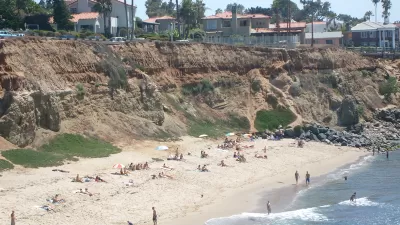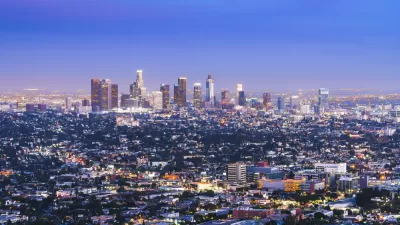While the Green Party nominates a presidential candidate every four years as a publicity stunt, other politicians—Democrats and Republicans alike—have been steadily pursuing a green agenda in California. California cities are better off for it.

As unnerving as it must be to witness the presidential campaign of the Green Party from elsewhere in the country, it's downright bizarre to watch it from here in California. On the one hand, many, if not most, California voters share Green values. On the other hand, they've already voted for those values. They've just voted for a different party.
Columnist Dan Savage recently published a series of scathing critiques (here, here) of the Green Party. They’re fun to read both for the acidity of Savage's sarcasm and for the depth of his indignation. He essentially says that the Green Party’s delusions of grandeur are almost as vast as those of Donald Trump. According to a blog post by party Chair Andrea Merida Cuellar, the Greens have won plenty of elections nationwide—president being only the most lofty—and the Greens hold exactly 116 of them.
As I contemplate the Greens' latest adventure, and the havoc that protest votes could wreak on our world this year, I consider that the Green Party isn't merely small-time. It's behind the times.

Planetizen Federal Action Tracker
A weekly monitor of how Trump’s orders and actions are impacting planners and planning in America.

Map: Where Senate Republicans Want to Sell Your Public Lands
For public land advocates, the Senate Republicans’ proposal to sell millions of acres of public land in the West is “the biggest fight of their careers.”

Restaurant Patios Were a Pandemic Win — Why Were They so Hard to Keep?
Social distancing requirements and changes in travel patterns prompted cities to pilot new uses for street and sidewalk space. Then it got complicated.

Platform Pilsner: Vancouver Transit Agency Releases... a Beer?
TransLink will receive a portion of every sale of the four-pack.

Toronto Weighs Cheaper Transit, Parking Hikes for Major Events
Special event rates would take effect during large festivals, sports games and concerts to ‘discourage driving, manage congestion and free up space for transit.”

Berlin to Consider Car-Free Zone Larger Than Manhattan
The area bound by the 22-mile Ringbahn would still allow 12 uses of a private automobile per year per person, and several other exemptions.
Urban Design for Planners 1: Software Tools
This six-course series explores essential urban design concepts using open source software and equips planners with the tools they need to participate fully in the urban design process.
Planning for Universal Design
Learn the tools for implementing Universal Design in planning regulations.
Heyer Gruel & Associates PA
JM Goldson LLC
Custer County Colorado
City of Camden Redevelopment Agency
City of Astoria
Transportation Research & Education Center (TREC) at Portland State University
Camden Redevelopment Agency
City of Claremont
Municipality of Princeton (NJ)






























